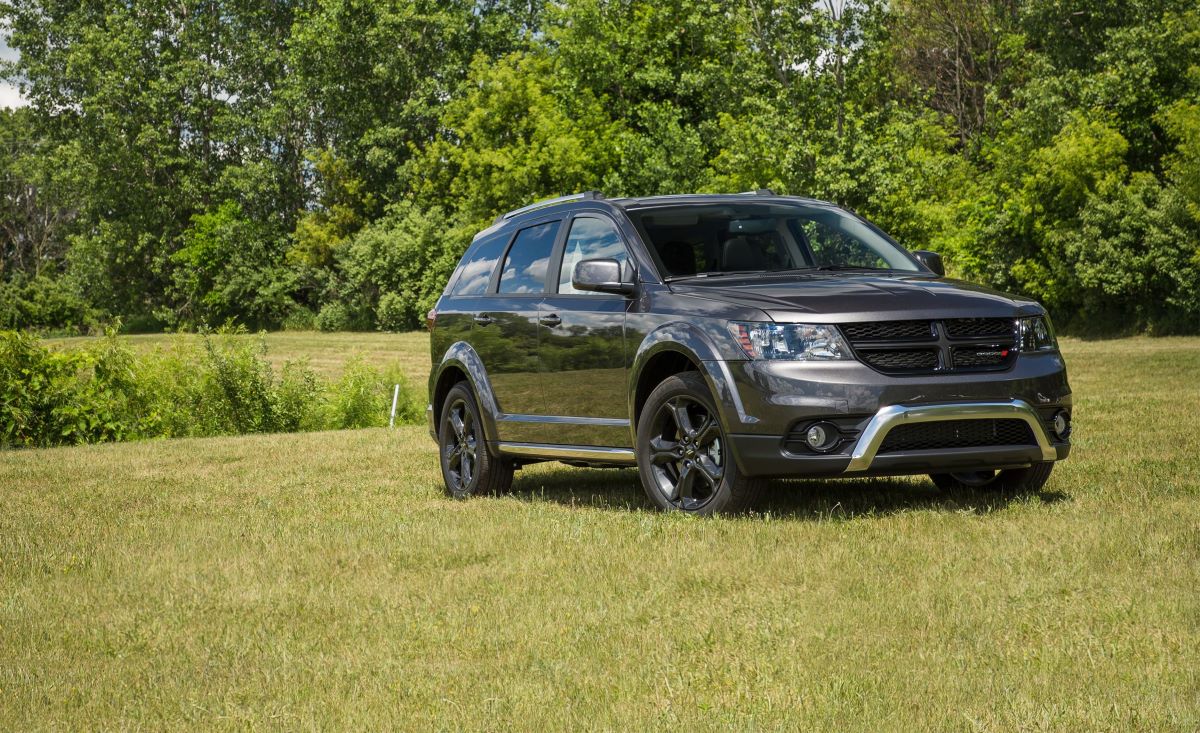When most people evaluate a vehicle—whether buying new, used, or just daydreaming—they tend to prioritize performance, fuel efficiency, safety features, or maybe even the infotainment system. But what many overlook, often until it’s too late, is something far more intimate and ever-present: the seats.
You sit in them every single time you drive. They’re the part of the vehicle your body is in constant contact with. And yet, seat durability remains an underappreciated indicator of long-term vehicle quality. Few things are more frustrating than spending tens of thousands of dollars on a vehicle, only to watch the seat leather crack, flake, and sag after just a couple of years of use.
The condition of a car’s seats doesn’t just affect comfort; it profoundly shapes your overall ownership experience. Cracking, peeling seats make a car feel old, neglected, and cheaply made, no matter how well the engine runs or how many bells and whistles the dashboard has.
On the flip side, seats that remain firm, supportive, and aesthetically intact after a decade of use are a sign of engineering excellence and thoughtful design. They’re the quiet proof that the manufacturer understood the importance of lasting quality. They offer daily reminders of why you made a smart buying decision—and, in the case of resale, they provide tangible evidence that the car has aged gracefully.
In this article, we explore the two extremes: the cars with seats that seem virtually immortal, and those whose seating materials start to deteriorate far too early. We’ll start by celebrating five standout models known for their seat durability.
These vehicles demonstrate what happens when automakers get it right—when they select the right materials, design with ergonomics and friction zones in mind, and refuse to compromise in pursuit of long-term customer satisfaction. These aren’t just comfortable rides; they’re long-haul companions built with quality in every stitch and seam.
Then we’ll turn to the cautionary tales—the five vehicles that missed the mark when it comes to seating longevity. These are cars that may look great at first glance, but whose seats begin to crack, peel, or fray far sooner than they should. For these models, cost-cutting on materials and construction ends up costing the owner much more in the long run.
Some use synthetic leather that’s beautiful out of the gate but brittle and prone to UV damage. Others suffer from poor foam quality, subpar adhesives, or stitching that just doesn’t hold up under real-world use.
Our criteria for selection were based on real-world owner reports, long-term reviews, and overall trends in upholstery quality. While leather seats tend to be more prone to cracking than cloth, some manufacturers manage to overcome this through smart material engineering and excellent build quality.
Conversely, even cloth seats can wear prematurely if the underlying foam collapses or the stitching is substandard. It’s not just about what you see on the surface—it’s about how the seat is constructed, supported, and protected over time.
By the end of this article, you’ll have a clearer understanding of what to look for (and what to avoid) if seat longevity matters to you, which it should. A car is one of the biggest investments most people make, and if you’re going to spend thousands of hours in that driver’s seat, shouldn’t it be built to last?
Whether you’re buying your next car, restoring a classic, or just curious about which manufacturers get this right, this guide will give you a deeper appreciation for an often-overlooked component of long-term vehicle satisfaction: the humble car seat.
Also Read: 5 Cars With Great Warranty Support in the U.S. and 5 That Leave You on Your Own
5 Cars With Seats That Last Forever
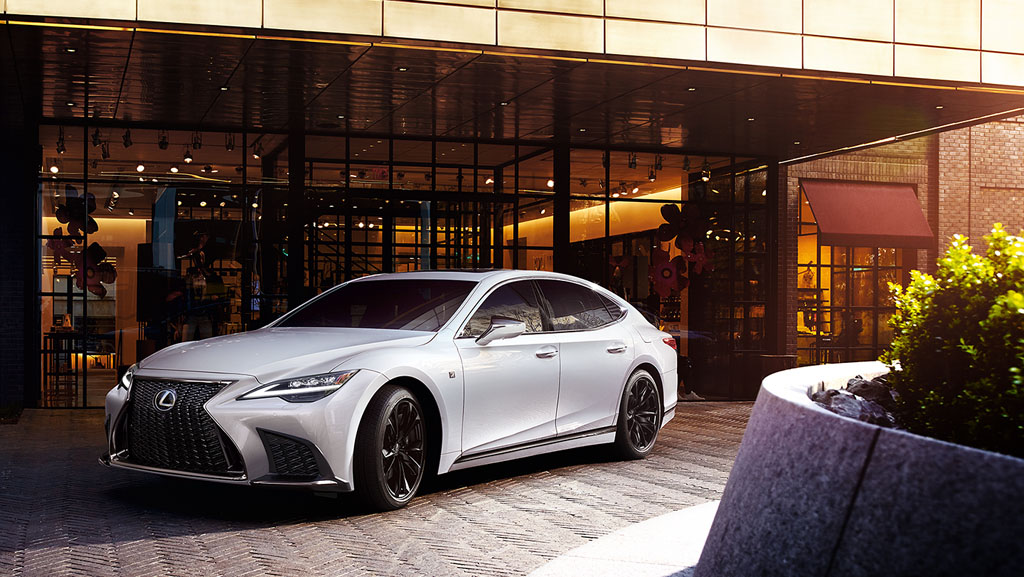
1. Lexus LS Series
The Lexus LS has long been considered the flagship of enduring luxury. From the very first LS400 introduced in 1989 to the more recent LS500, Lexus has taken a relentless approach to quality, especially when it comes to its interiors. The seats in these vehicles are crafted with a philosophy that blends opulence with resilience.
Lexus sources some of the highest quality leather in the industry, often selecting hides with fewer natural imperfections and putting them through rigorous tanning processes that increase their resistance to aging, cracking, and UV damage.
This attention to detail is why it’s not uncommon to see LS models with 200,000 miles and seats that look—and feel—decades younger. Beyond just the leather itself, the construction of the LS seat is a feat of engineering.
Lexus incorporates thick padding, multi-density foam, and robust stitching, all of which contribute to long-term durability. The padding does not flatten as easily as competitors’, and the stitch work is tight and consistent across the seat’s surfaces.
Many automakers stretch leather too taut or include excessive seams in high-contact areas, leading to early wear. Lexus, in contrast, designs each seat contour with ergonomics and material longevity in mind, reducing friction and strain on the leather over time.
The brand’s commitment to refinement also plays a key role. The LS cabin is typically climate-controlled better than most vehicles, with ventilated and heated seat options that are calibrated not just for comfort but also to avoid extremes in material expansion or contraction.
These subtle design decisions reduce stress on the upholstery during seasonal temperature swings. Additionally, the LS often includes UV-reflective glass and rear sunshades, which further reduce the exposure of seat materials to harmful sun rays, preserving both color and elasticity.
It’s also worth noting the demographic of LS owners. These vehicles are often garage-kept and owned by individuals who prioritize care and scheduled maintenance. But even in more aggressive usage scenarios—fleet, executive livery, or city driving—the LS’s seats show a remarkable ability to retain their structure and appearance.
This supports the theory that Lexus didn’t just engineer the car for luxury; they engineered it for time. Few interiors can claim to age as gracefully as those in the LS lineup.
If you’re seeking a full-size luxury car that doesn’t just promise longevity but delivers it through years of quiet performance and unblemished interiors, the LS should be at the top of your list. Lexus didn’t just build a car—they built an environment of enduring refinement, and nowhere is that more evident than in the seat beneath you.

2. Toyota Land Cruiser
The Toyota Land Cruiser has become a global icon not just for its legendary mechanical reliability but also for its unwavering commitment to interior durability. The seats in a Land Cruiser are perhaps the unsung heroes of its appeal.
Whether wrapped in high-quality leather or Toyota’s exceptionally tough synthetic materials, these seats are built to survive—and thrive—in some of the most hostile environments on earth.
From the Sahara to Siberia, Land Cruisers are subjected to extremes of heat, dust, moisture, and rough terrain, and yet the interiors often remain intact long after the drivetrain has crossed a quarter-million miles.
What separates the Land Cruiser from other SUVs is Toyota’s use of robust materials that prioritize function without sacrificing comfort. The leather used in the 100 and 200 Series is thick, matte-finished, and heavily coated to resist cracking, even after repeated exposure to heat and sunlight.
It’s not the soft, delicate luxury leather found in many German SUVs, but that’s precisely the point. This is leather engineered to work, not just to impress. It maintains its shape, resists stretching and drying, and shrugs off dirt and grime that would ruin lesser upholstery.
The Land Cruiser also benefits from a utilitarian, smart design philosophy. The seat bolsters are positioned and shaped to reduce stress on high-contact areas. The foam is dense and retains its structure longer than most SUV competitors. Even in vehicles used for off-road adventuring, the seat padding doesn’t sag or compress unevenly.
These are seats made for 12-hour journeys across terrain where you might not see pavement for days, and they hold up impressively well under repeated abuse.
Climate control systems in the Land Cruiser play an additional role in seat preservation. Powerful dual-zone or quad-zone HVAC systems regulate cabin temperatures effectively, protecting the leather from thermal shock and condensation.
In warmer markets, optional ventilated seats help maintain comfort while also reducing moisture buildup—a common enemy of upholstery. Over time, these small design choices add up to a significant difference in how the seats age.
Ultimately, the Land Cruiser isn’t just about capability—it’s about legacy. Toyota designed it to be passed down through generations, and the interior reflects that mission. When you step into a 15-year-old Land Cruiser and the seats are still supportive, crack-free, and visually dignified, you’re experiencing the culmination of a design process focused not just on aesthetics, but on timeless resilience.
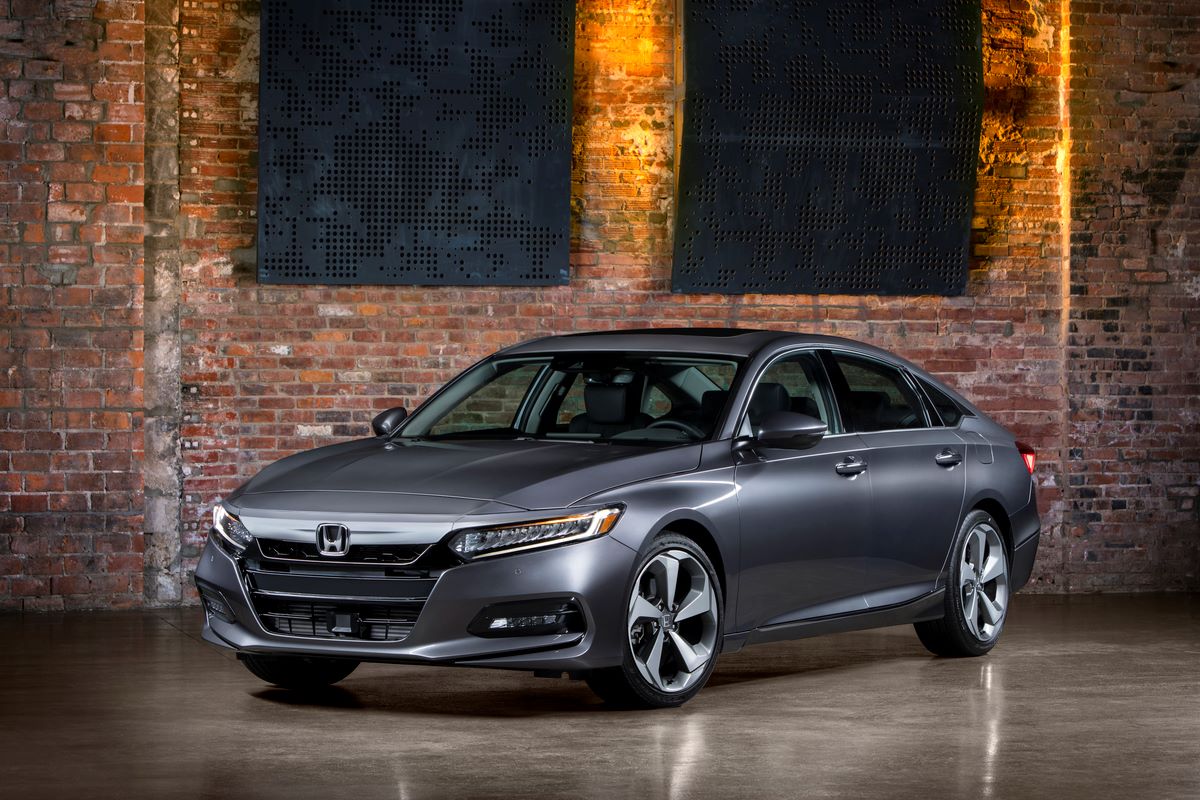
3. Honda Accord (Cloth Models)
When discussing long-lasting car interiors, leather often dominates the conversation. But cloth upholstery, when executed well, can often outperform leather in terms of longevity, and few manufacturers understand this better than Honda.
The Accord, especially in its cloth-trimmed configurations from the mid-2000s to the early 2010s, is a shining example of cloth done right. These seats are built with dense, tightly woven fibers that resist fraying, pilling, and tearing even after years of consistent use.
One of the most overlooked advantages of Honda’s cloth seats is their temperature stability. Leather may crack under heat or stiffen in cold weather, but cloth remains neutral. This consistency translates to less expansion and contraction of the underlying materials, preserving seam integrity and foam alignment over time.
Additionally, Honda uses robust, supportive foam beneath the upholstery that resists collapse far better than many entry-level sedans. This prevents “seat bottom sag” even as the miles stack up.
Honda’s attention to stitching and padding also plays a major role. The seams are double-stitched and located in areas that minimize friction from ingress and egress. By strategically placing wear zones away from pressure points, the design naturally reduces the chances of premature degradation.
This is a level of thoughtful engineering often missing in more expensive vehicles. The foam beneath the fabric also holds its shape, reducing the formation of pressure lines or wrinkles in the seat surface over time.
Another factor in the Accord’s interior resilience is its target market. These vehicles are frequently purchased by practical-minded drivers looking for reliability and long-term value.
While the seats may not scream luxury, they are built to withstand daily commuting, family life, and long-distance driving without showing major signs of fatigue. Even the rear seats, often neglected or abused in many vehicles, tend to hold up exceptionally well, with upholstery that resists fading and moisture.
For drivers who prioritize practicality and aren’t swayed by the superficial luxury of soft-touch leather, the Honda Accord’s cloth seats are a case study in functional durability. They represent what happens when a manufacturer invests in real-world longevity instead of showroom allure—a decision that pays dividends year after year.
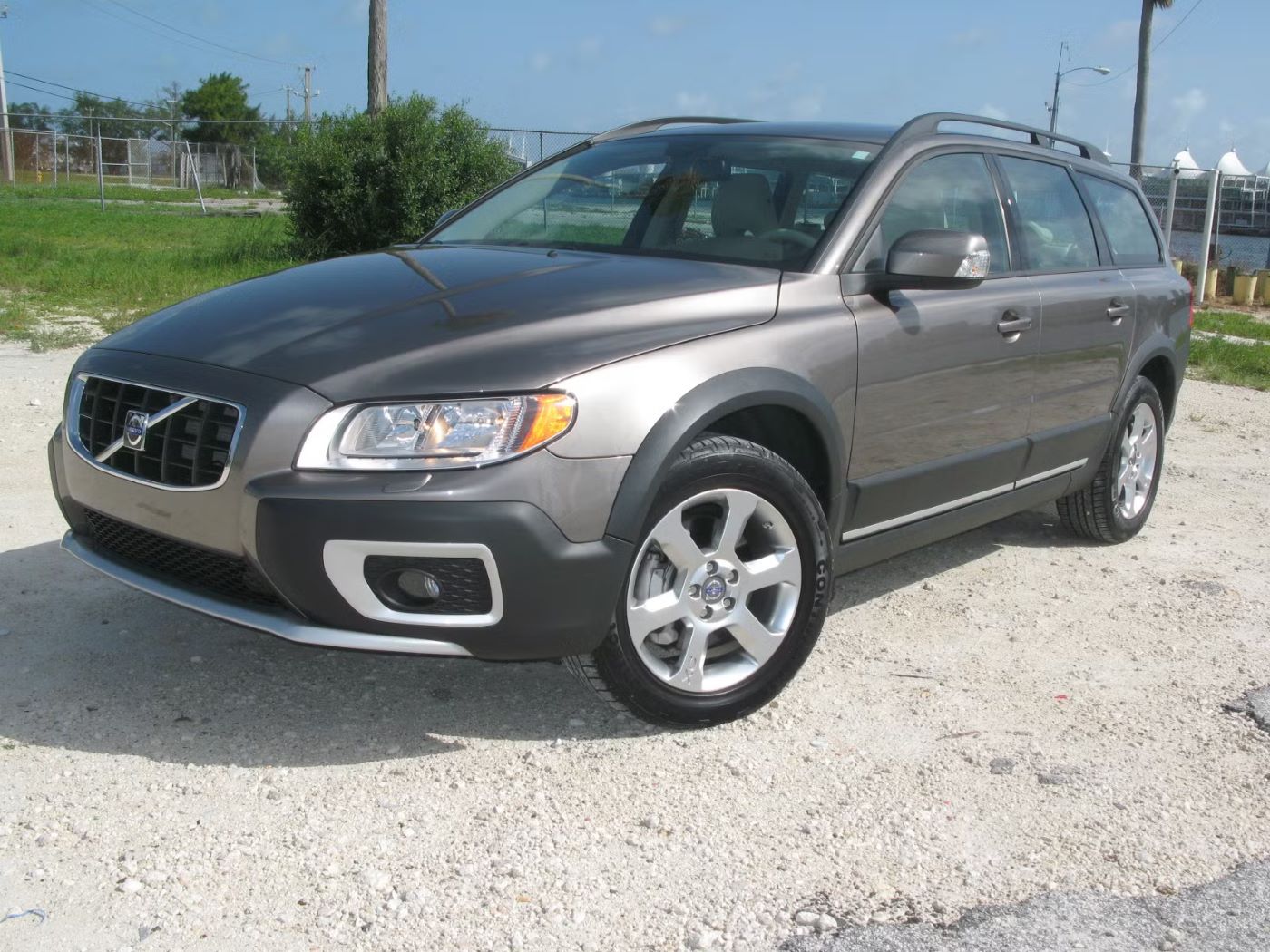
4. Volvo XC70
Volvo is often lauded for its pioneering safety innovations, but its interiors—especially in the XC70—deserve equal recognition for their durability. The XC70, produced in various iterations from the late 1990s through the 2010s, was a crossover built with Scandinavian pragmatism.
It combined a refined design ethos with rugged functionality, and the seats perfectly exemplify this philosophy. Whether outfitted in the signature T-Tec textile or Volvo’s robust leather, these seats were built for longevity, not fleeting fashion.
The T-Tec upholstery, a water-resistant, high-performance textile, is almost armor-like in its ability to resist stains, wear, and moisture. Unlike cheaper synthetic alternatives, T-Tec was developed to endure the cold, wet, and often gritty climate of northern Europe.
Owners who’ve used XC70s for outdoor recreation, pet transport, or heavy-duty family life routinely praise the seating material’s ability to hold up under real-world conditions. It’s not uncommon for seats to retain their integrity after more than a decade of use, with minimal visible wear.
Volvo’s leather seats, on the other hand, take a different but equally impressive path to endurance. The company sourced high-grade hides and combined them with heavy-duty protective coatings to reduce UV degradation and cracking. The foam padding used underneath is thick and slow to degrade, helping the seat retain both its shape and comfort.
Volvo seats also stand out for their ergonomic excellence—designed with orthopedic precision, they reduce body pressure and movement, thereby reducing long-term friction that can lead to material fatigue.
An underrated aspect of the XC70’s seat durability is the brand’s cultural commitment to sustainability and build quality. Volvo doesn’t over-engineer for complexity; instead, it over-engineers for stability. Fewer seams, flatter surfaces, and straightforward stitching help reduce failure points. These design choices make a huge difference after five, ten, or even fifteen years on the road. It’s a brand that builds for the long haul, and the seats show it.
In short, if you’re seeking a vehicle that bridges luxury with utility, and where the seats can handle years of real use without losing their composure, the XC70 is a quiet champion. It may not be flashy, but few vehicles age with such quiet dignity.
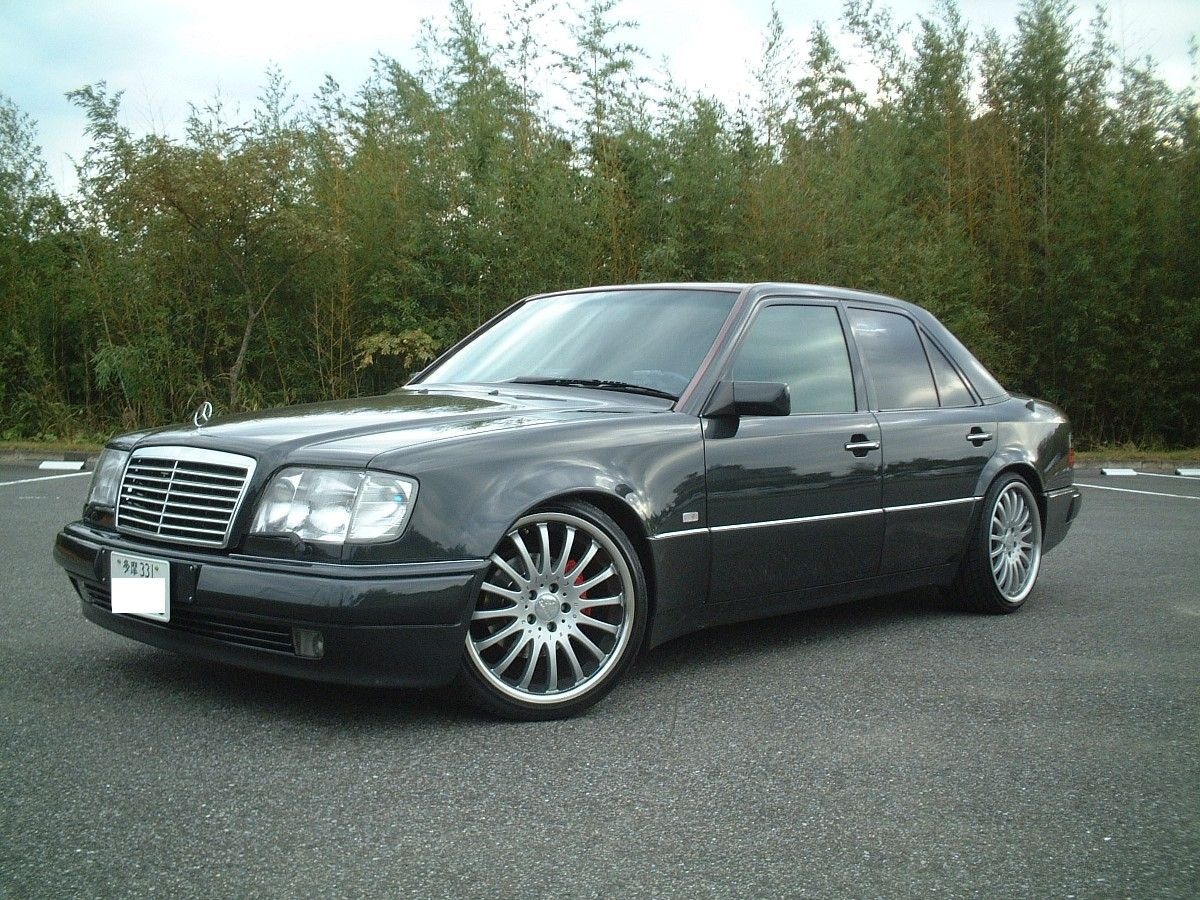
5. Mercedes-Benz W124 (E-Class)
The Mercedes-Benz W124, produced between 1984 and 1995, is often cited as one of the most durable vehicles ever made, and nowhere is that durability more evident than in its seats. While many vehicles from that era have sagging, torn, or sun-damaged upholstery, W124 interiors frequently look like they’ve barely aged. The secret? Mercedes’ famous MB-Tex vinyl—an artificial leather that many owners swear is tougher and more resilient than the real thing.
MB-Tex is thick, UV-resistant, and practically impervious to cracking under normal use. It resists drying and remains flexible even after years of exposure to varying temperatures. Unlike genuine leather, which can be temperamental and require conditioning, MB-Tex requires little more than a damp cloth to stay looking fresh.
It’s not a substitute for luxury—it is luxury, in the sense that it’s engineered for life, not just looks. It’s common to find W124s with over 300,000 miles and seats that still feel firm and show minimal signs of wear.
Even the foam underneath tells a story of precision engineering. Mercedes used durable, high-density padding that retains its support without collapsing or deforming. This results in a consistent seating experience even after decades of use. Combine that with a sturdy seat frame and thoughtful ergonomic design, and you get a seat that doesn’t just survive—it thrives over time. That’s part of why so many W124s are still driven daily by enthusiasts today.
Mercedes also maintained consistency in quality across trim levels. Whether you were buying a base 260E or a higher-end 300E, the seats were built to the same meticulous standards. This egalitarian approach ensured that every W124 owner received the same level of excellence, and it’s one of the reasons why these interiors have such a sterling reputation decades later.
If you’re lucky enough to own—or find—a W124, the seats are likely one of the first things you’ll notice. They’re not flashy or complex, but they do what few modern seats can: they endure without complaint, offering daily proof that great design never goes out of style.
5 Cars With Seats That Crack in 2 Years
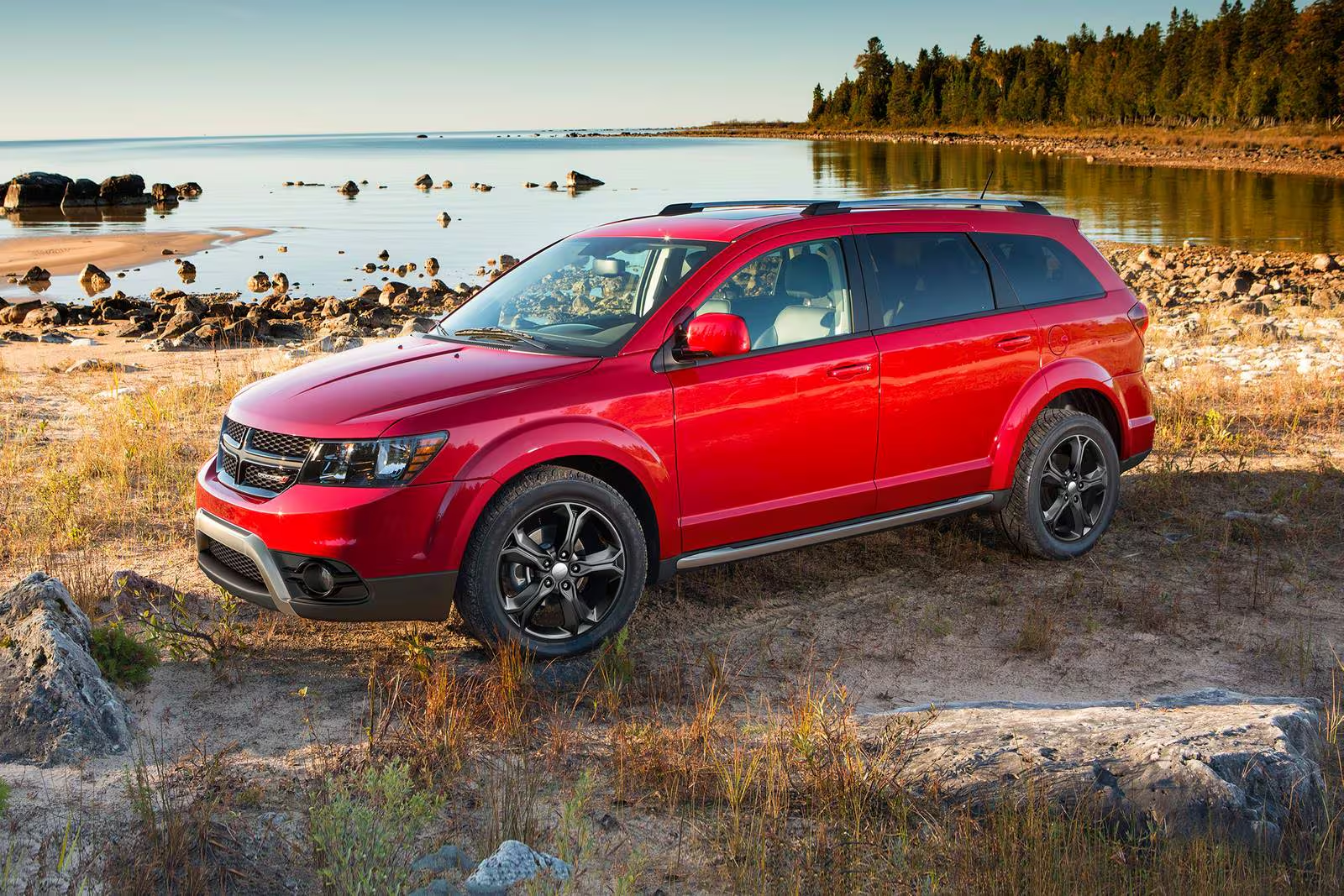
1. Dodge Journey
The Dodge Journey has long struggled with interior quality, and the seats are a particular pain point. In trims that came with leather or leatherette upholstery—primarily the SXT and R/T variants—premature cracking is an all-too-common complaint.
Many owners report visible damage within 18 to 24 months of regular use, particularly on the driver’s seat bolsters and cushion. The leather-like material may look upscale in the showroom, but in practice, it lacks the resilience required to endure daily wear and tear.
One of the major issues stems from the Journey’s use of synthetic leather with a thin protective topcoat. While this approach saves on cost, it sacrifices long-term durability. As occupants slide in and out of the seats, the bolsters experience repeated friction. Over time, the material’s thin coating begins to peel, revealing a dry, brittle underlayer that quickly cracks and splits. Unlike real leather that might recover some flexibility with conditioning, the Journey’s faux leather simply disintegrates under pressure.
Another factor is the cushion construction underneath the upholstery. The foam is relatively soft and tends to compress unevenly, leading to deformities that exacerbate tension on the surface material. Once the foam loses shape, it stretches the seat covering in unnatural ways, causing even more cracking and visible stress lines. This creates a cascade of deterioration—surface damage leads to structural sag, which leads to more surface damage, and so on. It’s a flaw that shows up quickly and worsens exponentially.
The poor durability of the seats isn’t just an aesthetic issue—it’s also a comfort and resale problem. Cracked seats diminish the overall impression of the vehicle and hurt its value on the used market. Potential buyers immediately notice worn upholstery, and fixing it usually requires full seat reupholstering or aftermarket covers, which rarely look seamless. Many Journey owners have had to address this problem long before the powertrain gives them trouble.
Ultimately, the Dodge Journey is a cautionary tale in cost-cutting. While the vehicle checks a lot of boxes in terms of space and affordability, the corners cut in material quality, especially the seats, become painfully obvious within a couple of years. The upholstery not only fails to hold up but becomes a daily reminder of the compromises baked into the vehicle’s design.
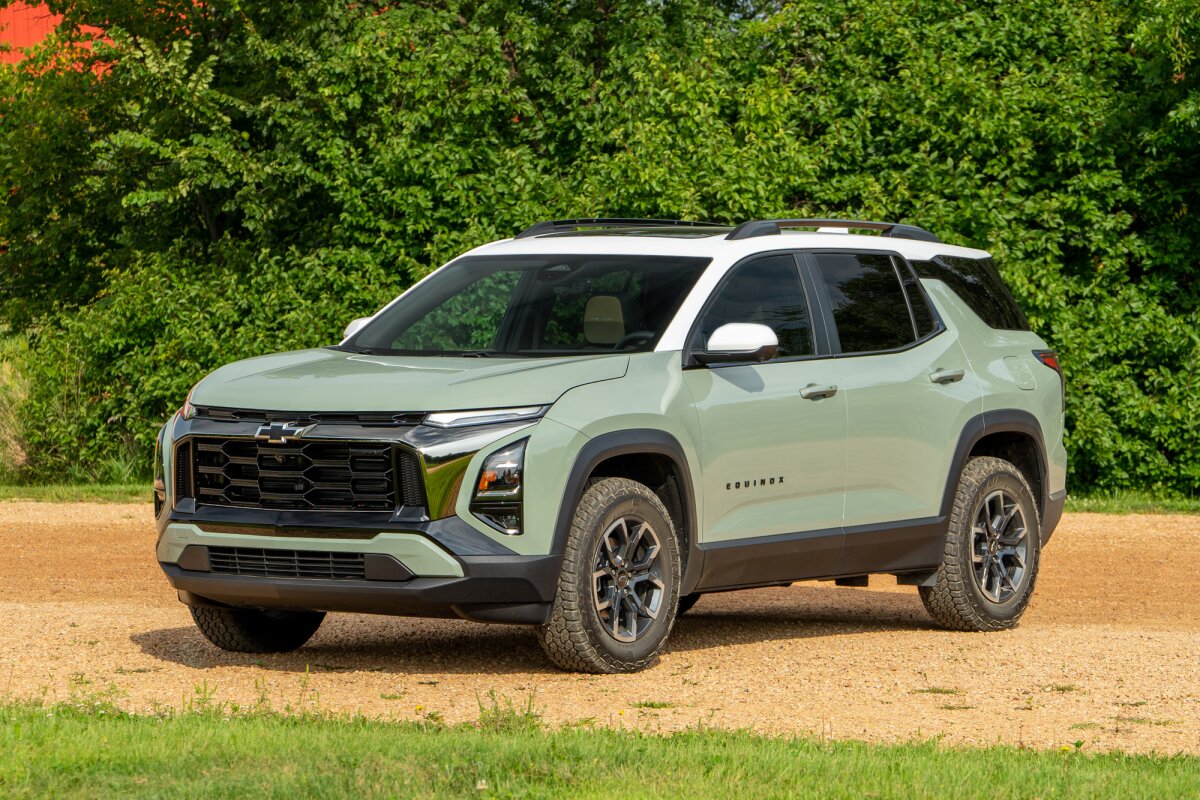
2. Chevrolet Equinox (2010–2017 Models)
The Chevrolet Equinox, particularly in the second-generation models produced between 2010 and 2017, suffers from severe seat durability issues that have frustrated thousands of owners. On higher trims that feature leatherette or GM’s proprietary leather-like material, the cracking begins quickly, often within the first 24 months of average use. For vehicles marketed toward families and commuters, this level of interior wear is highly disappointing.
A closer look reveals that the Equinox’s leatherette isn’t made to withstand regular friction or UV exposure. The material becomes dry and brittle, especially on the driver’s seat, where constant use creates strain across seams and edges. Heat exacerbates the problem.
In warmer climates, the synthetic coating begins to peel away in fine strips, often starting at stress points like seat edges and cushion seams. These cracks spread quickly, leaving behind a seat that looks far older than the vehicle’s actual mileage.
Another problem lies in the overall design of the seats themselves. While visually stylish, the Equinox’s seats are not ergonomically forgiving. The bolsters are narrow and heavily used during ingress and egress, creating high-friction zones. Combine that with low-density foam that compresses unevenly, and you get a surface that sags and cracks with disappointing speed. Even careful drivers have noted that simply exiting the vehicle causes visible scuffs and stretch marks in the upholstery.
It’s not just the front seats either—rear seat cushions also show signs of fatigue early. Families with children or pets report rapid deterioration of the material, even with moderate usage. GM’s use of softer, less resilient material compounds the problem. While there may be some preventative measures available—seat covers, leather conditioners—they often do little to extend the lifespan once the cracking begins. By then, the damage is often irreversible.
For a compact SUV intended to be a family-friendly daily driver, the Equinox’s interior falls far short of expectations. Cracked seats not only look bad but signal a broader issue with material quality. Buyers seeking long-term comfort and value may find that this generation of Equinox delivers on space and features, but disappoints where you sit every day.
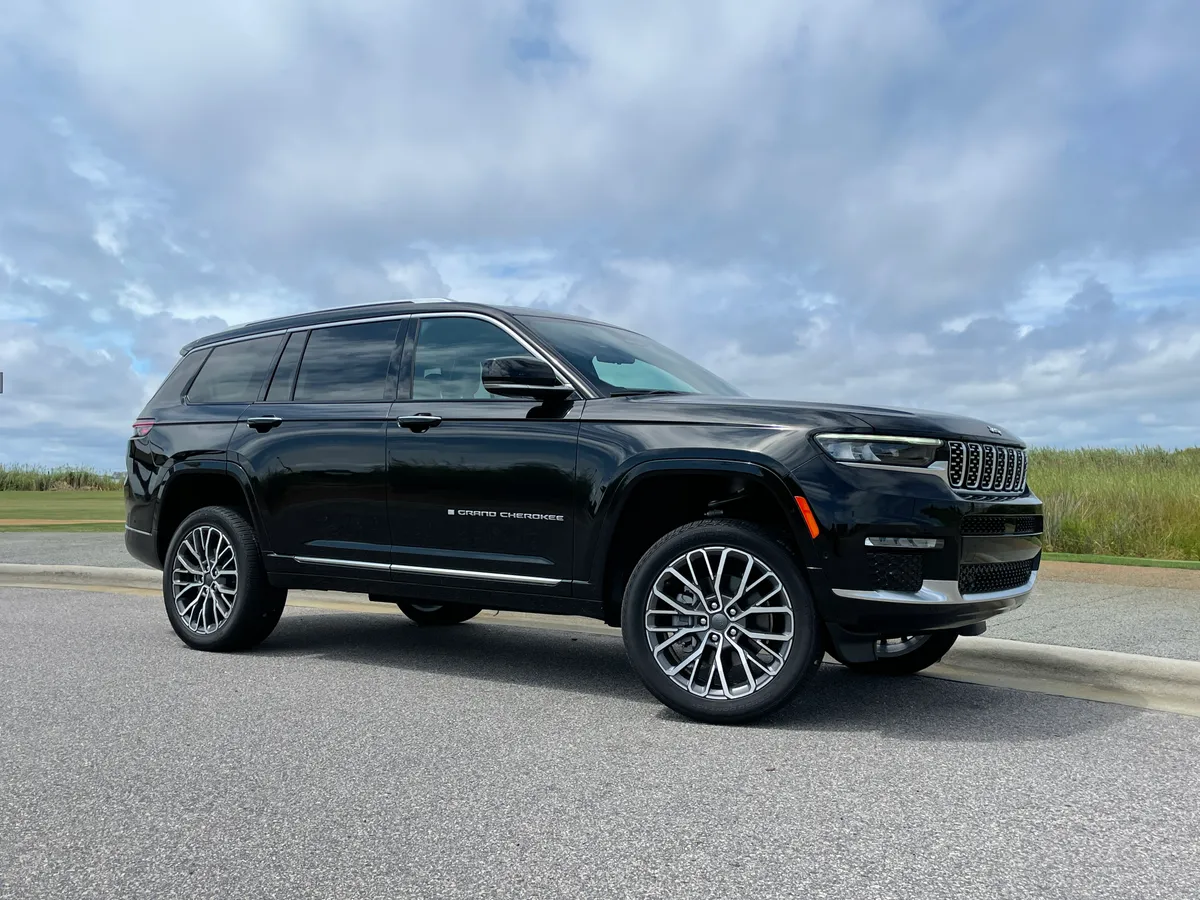
3. Jeep Grand Cherokee (2011–2015 Models)
The 2011–2015 Jeep Grand Cherokee marked a significant leap in design and technology over its predecessors, but its interior, particularly the leather seating, didn’t live up to the SUV’s rugged image. Many owners across these model years have reported rapid seat deterioration, particularly in the form of cracking and surface splitting. This issue is most commonly seen on the driver’s side, but isn’t isolated to just one seating position or trim.
Jeep opted for a softer, more luxurious leather feel in the Limited, Overland, and Summit trims during this era. While initially impressive, this softness came at the expense of long-term resilience. The leather lacks the thickness and top-coat protection necessary to withstand constant use. Within as little as 18 months, the driver’s seat often begins to show signs of cracking, especially on the outer bolster where most pressure is applied during entry and exit.
Another contributing issue is how the seat is positioned. The Grand Cherokee has a relatively high ride height and seating position, which requires a bit of a “slide-and-drop” motion for many drivers. This puts constant stress on the outer side of the cushion and backrest. Jeep didn’t reinforce these zones adequately, resulting in premature wear. The problem is often compounded by the underlying foam degrading, causing the seat to deform and stretch the leather unevenly, accelerating the cracking process.
To make matters worse, Jeep’s leather supplier during those years used a finishing process that was particularly susceptible to UV damage. In warmer climates or vehicles parked outdoors regularly, the leather often fades, dries out, and begins to peel at an accelerated rate even when conditioning products are used. It’s a frustrating flaw in what is otherwise an attractive and capable vehicle.
This issue significantly affects the Grand Cherokee’s perceived value over time. Buyers looking at used models from this era often find visually impressive exteriors paired with tattered interiors. That disconnect makes it hard to justify premium prices, especially when compared to competitors with more durable cabins. For all its performance and off-road prowess, this generation of Grand Cherokee struggles where drivers spend the most time—in the seat.
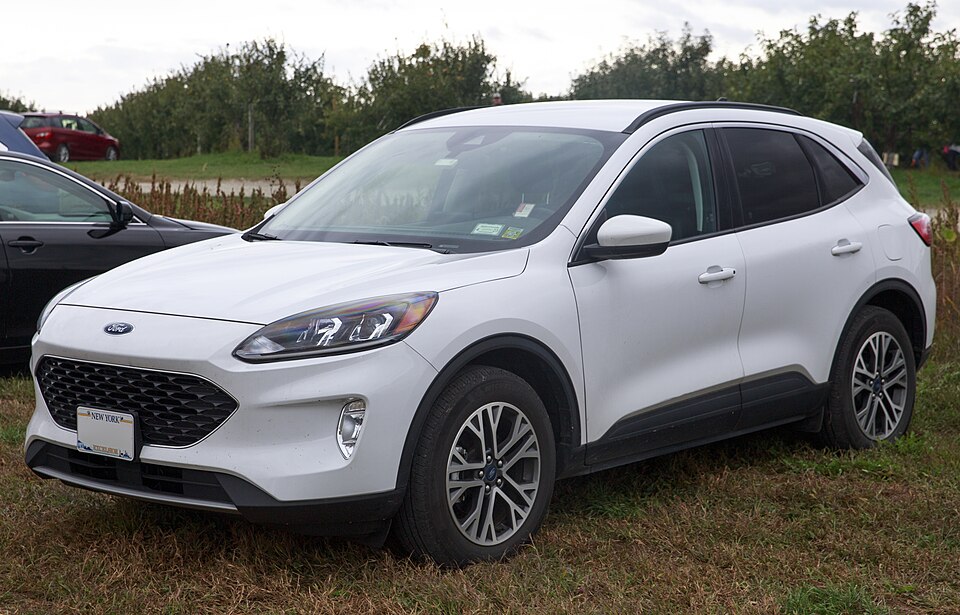
4. Ford Escape (2013–2016 Models)
Ford introduced a new generation of the Escape in 2013, hoping to modernize its image with a sleeker design and upgraded interior. While the new styling and tech packages were praised, the vehicle’s leather-trimmed seats, especially in SE and Titanium trims, quickly became a source of disappointment. Many owners began reporting cracking, bubbling, and peeling leather within just two years of ownership, sometimes sooner in hot or dry climates.
The problem is largely rooted in Ford’s material choice. The Escape’s seats were not full-grain leather but a synthetic blend designed to imitate leather while reducing production costs. This blend lacks the elasticity and oil-retaining properties of real leather, making it far more susceptible to cracking. Once the top layer starts to dry out, small cracks form in high-use areas, particularly where the seat bends or stretches. These cracks deepen with time and soon become unsightly tears.
Adding to the issue is the Escape’s compact cabin layout, which forces frequent contact between occupants and the seat edges. These contact zones bear the brunt of wear, especially when entering or exiting the vehicle. The foam under the leather is also relatively soft, compressing over time and causing additional stretching in the upholstery. Without strong backing support, the surface materials simply can’t keep up with the forces placed upon them.
Even attempts to mitigate the wear often fail. Many owners have tried conditioners, seat covers, or shade protectors to prolong seat life, but the poor material quality can only be delayed, not fixed. Once the cracking starts, there’s little that can be done short of reupholstering or installing full seat covers—both of which detract from the resale value and experience of the vehicle.
The Ford Escape of this era may have marked a step forward in technology and driving dynamics, but it was a step backward in interior durability. For drivers seeking a vehicle that looks as good on year five as it did on day one, this Escape often falls short—starting right where it matters most: the seat you sit in every day.
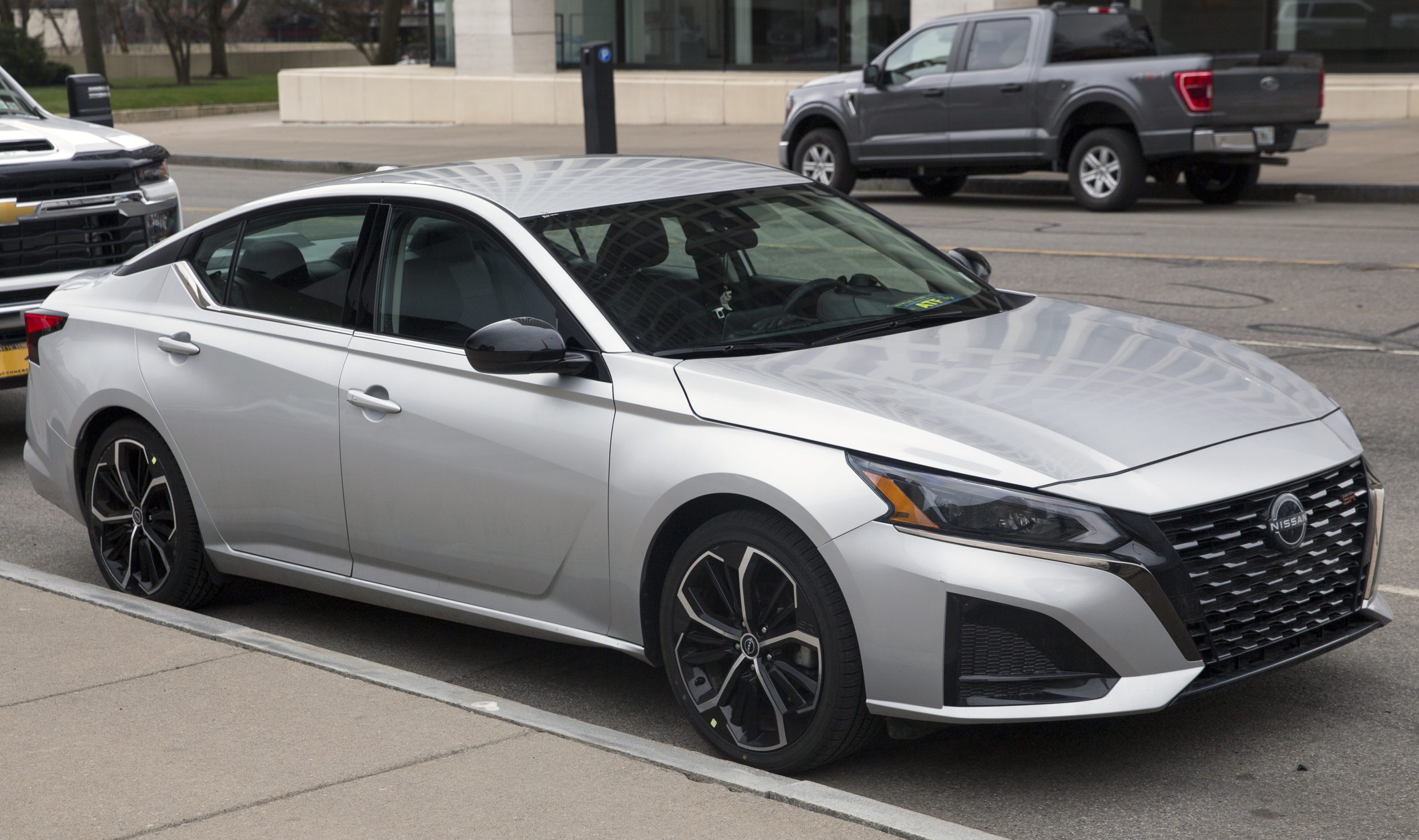
5. Nissan Altima (2013–2018 Models)
Nissan’s Altima, a popular choice in the mid-size sedan segment, offered good fuel economy, a roomy cabin, and plenty of tech features. Unfortunately, one area where it consistently disappointed was in the longevity of its interior—particularly the seating material. From 2013 to 2018, both the leather and cloth seats suffered from premature wear, with cracking and fraying commonly reported within just a couple of years of ownership.
In the SL trims with leather, the seats were especially vulnerable. Nissan used a softer, cost-conscious leather that lacked the durability and structural reinforcement found in competitors like Toyota or Honda. The material’s surface broke down quickly, especially in areas where friction was high—driver’s side bolsters, lumbar zones, and seat edges. These areas began showing cracks early on, even with moderate use, and conditioning treatments often had little to no effect.
Cloth seats didn’t fare much better. The fabric was prone to pilling and tearing, especially along seams and stitching points. The underlying foam was also an issue—it compressed unevenly, which caused the surface material to stretch in awkward patterns, eventually leading to visible wear. Many owners noticed the fabric separating from the foam beneath, creating loose, wrinkled patches that degraded both the look and comfort of the seat.
Nissan’s cost-saving approach extended to stitching and adhesives as well. Seams were not reinforced adequately, and in several documented cases, the threads began to unravel within 24 months. In some models, owners noticed the seat covers becoming partially detached from their frames—a quality control issue that only worsened with heat, humidity, or heavy usage.
These problems have left a mark on the Altima’s reputation. While it continues to sell in high volumes thanks to its value-oriented pricing and smooth ride, many owners come to regret their choice once the seats start to show age far earlier than expected. In a competitive segment filled with alternatives that hold up better over time, the Altima’s seat issues are a reminder that not all cost savings are worth the trade-off.
Also Read: 5 Engines That Never Burn Coolant and 5 That Always Need Top-Ups
As we bring this comparison to a close, it’s clear that a car’s seat longevity isn’t a trivial detail—it’s a telling reflection of the manufacturer’s priorities. When an automaker commits to high-quality materials, thoughtful ergonomics, and proper construction methods, it shows up in the seats.
They don’t just look better longer; they feel better, support better, and age more gracefully. And in a world where most vehicles are driven daily, often for years on end, that level of reliability makes a significant difference in the ownership experience.
Let’s reflect on what we’ve seen in the standout performers—vehicles like the Lexus LS, Toyota Land Cruiser, and Mercedes-Benz W124. These models demonstrate that longevity doesn’t have to mean sacrificing comfort or aesthetics. They’ve managed to engineer seats that provide long-term durability without giving up luxury, practicality, or design sophistication.
Their manufacturers understand that high-mileage drivers and discerning owners notice when a seat holds up year after year. These companies don’t just build cars—they build environments that respect the driver’s comfort, routine, and investment over time.
Then there’s the Honda Accord and Volvo XC70, two vehicles that prove you don’t need high-end leather to achieve long-lasting seating quality. These cars often feature cloth or textile-based seats that outperform many leather-wrapped alternatives when it comes to long-term resilience.
The key lies in how the materials are treated, how the seams are reinforced, and how the foam retains its structure through years of pressure and use. It’s these subtle, engineering-forward decisions that separate long-lasting seats from those that fall apart at the seams—literally.
Contrast that with the vehicles in our cautionary group: the Dodge Journey, Chevrolet Equinox, Jeep Grand Cherokee, Ford Escape, and Nissan Altima. These are not bad cars outright, but they suffer from compromises made in interior material selection. Whether it’s low-grade synthetic leather, inadequate foam density, poor stitching, or a lack of UV protection, these flaws add up fast.
And for owners, the result is frustratingly predictable: cracking, peeling, sagging seats that make even a relatively new car feel aged and neglected. Once that happens, no amount of infotainment or horsepower can mask the sense that the car is wearing out before its time.
What’s worse, these flaws often hit where it hurts the most—on daily use. Seat damage isn’t hidden under the hood or tucked behind a panel. It’s in your face and under your body, every time you drive. And while many drivers attempt to counteract this early wear with leather conditioners, seat covers, or sunshades, these are temporary solutions at best.
The truth is, no amount of TLC can fix inherently poor materials. Prevention helps, but the most effective strategy is buying a vehicle that was designed for longevity from the inside out.
The takeaway? If you’re shopping for a vehicle and plan to keep it for more than a few years, pay close attention to the seat materials and construction. Look beyond the spec sheet and test the quality yourself. Sit in the back seat.
Check the stitching. Press the foam. Feel for firmness and structure. Research user reviews specifically related to interior wear. Seats might not get headlines in car magazines, but they are one of the most telling indicators of whether a vehicle is built to last.
In the end, cars are meant to move us, not just across highways, but through the chapters of our lives. The seats we choose to travel in should age with grace, not fall apart under pressure. With the insights from this article, you now know which vehicles are likely to support you, literally, for the long road ahead, and which ones might just leave you sitting in disappointment.

